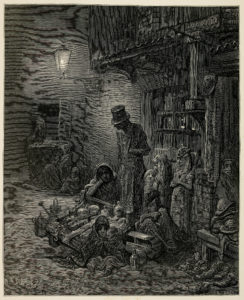The Adventures of Sherlock Holmes-Adventure 2: “The Red Headed League”
London is to Holmes as Oxygen is to life. Holmes would be incomplete without London as his greatest companion. With the development of police professionals in the city of London, less crimes were being solved by crows of people on the street as seen in Dickens’ Oliver Twist. Thank God we developed a more organized police force. In light of these new police developments, there are always internal and external problems with new organizations. Police officers are valuing themselves high above the “theoretical and fantastic” people like our dear Holmes. The place of London is expanding in both economic production but also population. This makes an influx in criminal activity more likely to occur. It makes sense that Holmes would find more crimes to solve in London than in a smaller town outside the big booming & heavily cramped city.
The balance between the various colliding religions and social classes can cause issues for the criminal activities in the city of London. Holmes is faced with a clashing of differing people in a tense time in London’s history. The accusations of social misconduct & bad behavior could expand on the number of crimes that would normally be committed in a city. Holmes is going up against a growing professional organization and a growing population but still manages to keep his name in people’s minds. I guess that’s the benefit of living in the big city, word travels fast.

